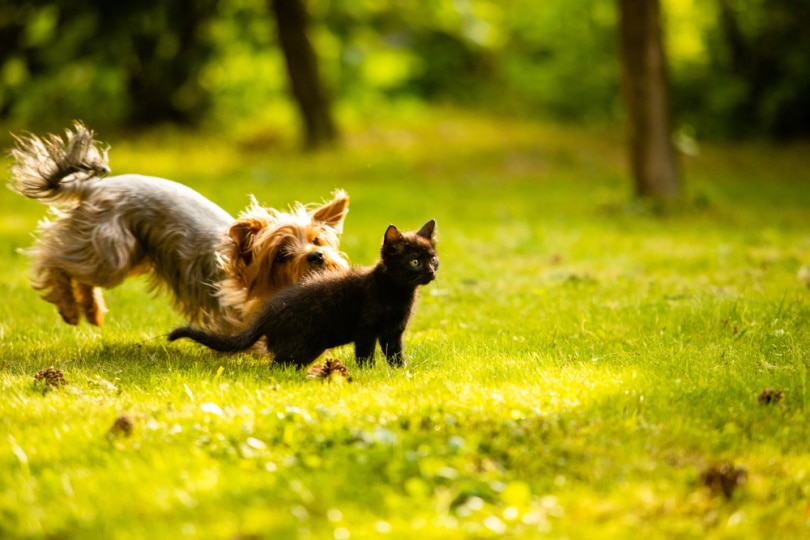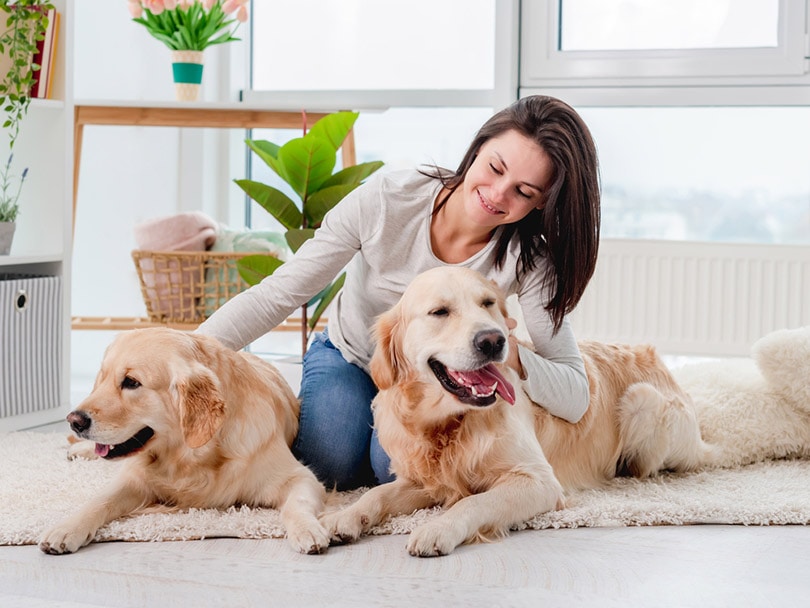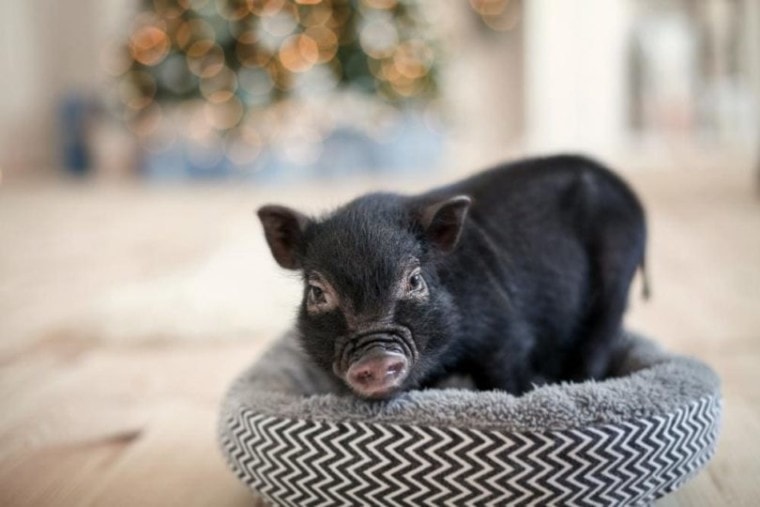
We must preface this article by saying we have nothing against pet pigs. They can make delightful additions to your home, provided you research what’s involved first. Our goal is to educate our readers about the unique challenges of owning these animals. Suffice to say that they are not for everyone. However, the same advice applies to any animal you bring into your home.
After all, pet ownership is a responsibility that no one should take lightly, mainly when dealing with pet pigs. The ones you’ll find for sale are related to the commercial ones raised as livestock. The term pot-bellied pig can refer either to the Vietnamese species or a type of animal that is smaller than what you’d see on a farm.
The 16 Common Problems With Mini Pet Pigs
1. Legal Issues and Permits
The first issue you’ll likely encounter with no matter what size pig you want to get is whether it’s legal or not to own one. That’s especially true if you live in a suburban or urban area. Even if you can own one, you’ll probably find a lot of conditions attached to it, such as a required permit, spay/neutering, vaccinations, and specifications on its living space.
If you’re considering a pet pig, do yourself—and your family—a favor and check on the legality within your city first. Bear in mind that these animals often get quite attached to their owners. Taking one from a family home will likely be as difficult, if not more, on it than it is for you.

2. Problems With Other Pets
There are two groups of animals in the world: prey and predators. A pet pig is part of the former. Your dog or cat is one of the latter. That’s not to say that they won’t get along. A lot depends on how strong the prey drive is in your other animals. Pigs run away if startled. That behavior can trigger the instinct in your dog or cat to give chase.
3. Foreign Objects or Poisonings
Pet pigs are omnivores that will eat anything they encounter, whether it’s edible or toxic. It’s not unlike having a curious toddler in the house. Therefore, you must take the same precaution for safeguarding your home with a pig in the house as you would with a small child. The other thing to bear in mind is that these animals are intelligent. That may mean locks on doors or gates to keep them safe.

4. Arthritis
Arthritis is a health condition that affects many pets and people. That makes routine vet care necessary to manage these chronic disorders to ensure a good quality of life for your pig. Of course, feeding your pet a high-quality diet and monitoring its weight will go a long way toward keeping your pet healthy.
5. Sunburn
Pet pigs can live indoors, outdoors, or a combination of both, depending on where you live. However, it’s imperative to provide shade for your pig if it stays outside on sunny days. Its skin can get sunburn as readily as yours without sunscreen. However, reflected sunlight can also cause issues. We suggest limiting your pet’s time outdoors when the UV index is high.
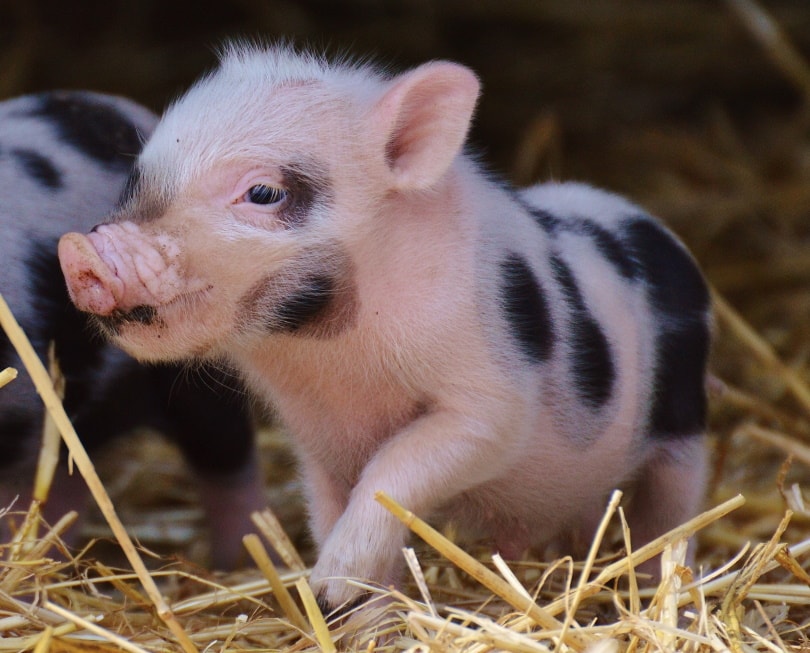
6. Hoof Issues
A mini pet pig’s hooves aren’t unlike a dog’s toenails. Both animals need to walk on rough surfaces to wear them down naturally. It’s infinitely easier to take care of them that way than to trim or grind them. Otherwise, you might end up having to take your pig to the vet to get it done. It’s a must-do since it can cause a plethora of problems, including interfering with your pet’s health because of infections.
Fortunately, you can train a pig to walk on a leash. That’s where its intelligence comes into play. These animals respond well to the praise they receive from their owners. Besides, you and your pet are certain to get some attention strolling in the neighborhood.
7. Not Enough Space
Having enough room to keep a mini pet pig is a significant issue. Some cities may even specify a minimum space. We recommend at least 250 square feet. That’s particularly true if being in its pen is your pig’s only source of exercise. However, there’s more to it than just the real estate. You must also provide shade and have a fence around it to keep other animals out of its space.
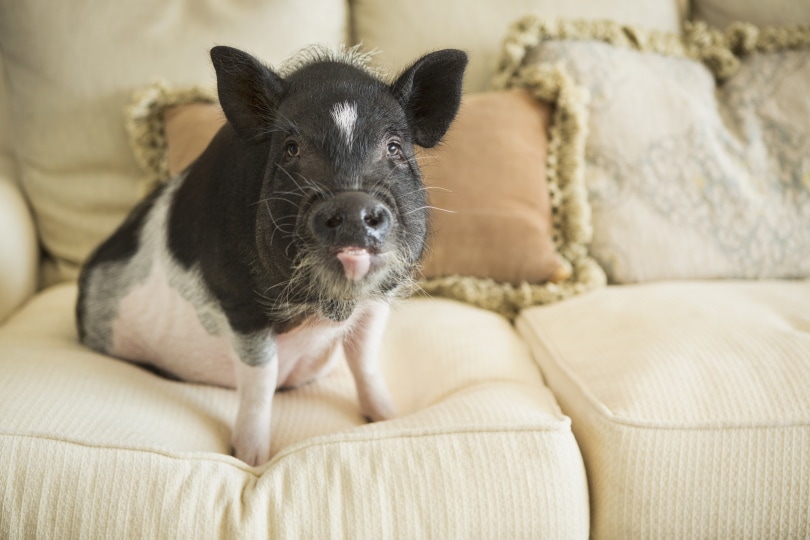
8. Digging Up the Yard
Pigs like to root around in the dirt. That instinct is one reason that people use these animals to find truffles. Unfortunately, that also means your pet will root around in your yard, whether you want them to do so or not. It’s not unlike a cat scratching. It’s doing what comes naturally to them. It’s one of the banes of inviting a pig into your home.
9. Eating Garden Plants
We’ve talked about a pig’s diet. Anything is fair game for your pet, even your garden or landscaping. We strongly urge you to verify the identification of all plants in your pig’s space. Many common varieties are toxic to these animals. The list includes many popular species, including crocus, lily of the valley, and hyacinths.
10. Adult Size
Mini is a subjective descriptor. These animals can get up to 150 pounds or more, depending on the type and breed. That makes size an issue when it comes to things like taking your pig to the vet or doing routine maintenance like hoof grinding. Genetics and diet also play significant roles in how big your pet will get. Establishing a proper pet-owner relationship early on is imperative.

11. Obesity
Obesity is a common health problem with many pets, including mini pigs. After all, they are so cute that it’s hard to resist giving them another treat. However, being overweight can affect your pet in multiple ways that can affect its quality of life and longevity. We recommend sticking to the feeding guidelines of the diet you offer your pet. We also suggest limiting treats to training sessions.
12. Heat Intolerance
Pigs are intolerant of extreme temperatures on either end of the spectrum. Excessive heat is of particular concern since these animals can’t sweat to cool themselves. That’s why we’ve emphasized providing shade for your pig. The ideal temperature range is 65–75℉. The other conditions are common sense, such as it being dry to prevent mold or bacteria and draft-free.
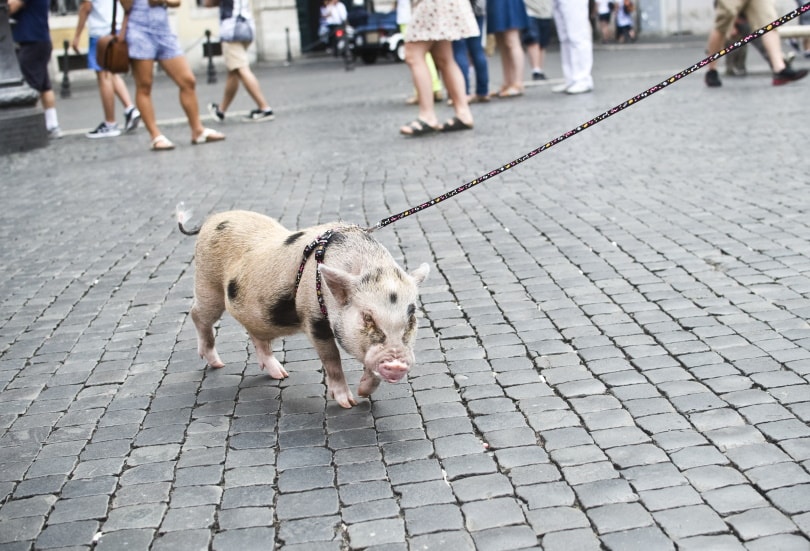
13. Aggression
Pigs settle into a hierarchy with their cohorts. That same instinct applies to its new tribe, you and your family. That’s why it’s essential to establish the house rules from day one to stop aggression in its tracks. These animals will resort to this behavior to get what they want. Your goal is to make sure that they don’t learn to use it inappropriately to get their way. After all, you’re the pet owner who calls the shots.
14. Finding a Vet
Mini pet pigs came into vogue during the mid-1980s. The North American Pet Pig Association (NAPPA) followed in 1989. You’ll find this organization a helpful resource when it comes to general questions, such as where to find a vet that will treat these animals. Of course, livestock veterinarians can help. However, you may find one who works with pet pigs more useful.
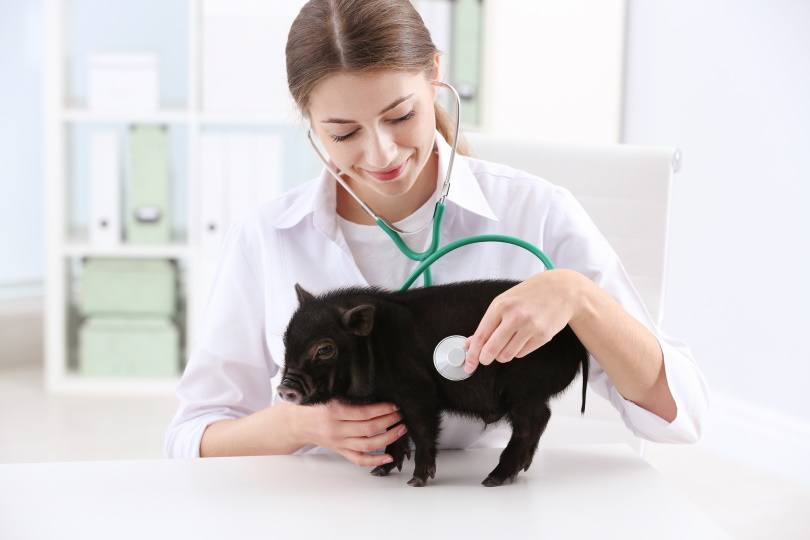
15. Expensive Care
Let’s face it. Caring for a pet isn’t cheap, however necessary it is. The same thing applies to mini pigs. You may find that vet care is more expensive because of the limited demand. You’ll likely find that you may be making more visits because of the nature of these animals with their routine maintenance. Nevertheless, it’s imperative to keep up with your pet’s care to ensure its good health.
16. Teacup Pig Myth
One of the biggest problems you’ll encounter with mini pet pigs is the myth of the so-called teacup-sized animals. There is no formal definition of this term, no matter how much you’ll see the name thrown around in certain circles. Remember that these animals haven’t been pets for long. The only way you can get a reasonable idea of size is by looking at the parents and grandparents.
However, even that isn’t a guarantee about what you’ll get in return. It’s worth noting that unreputable sellers will selectively breed small animals. The problem is that they may have health issues that prevent them from reaching a normal size. The myth is one that the NAPPA has fought from the beginning of the pig’s popularity.
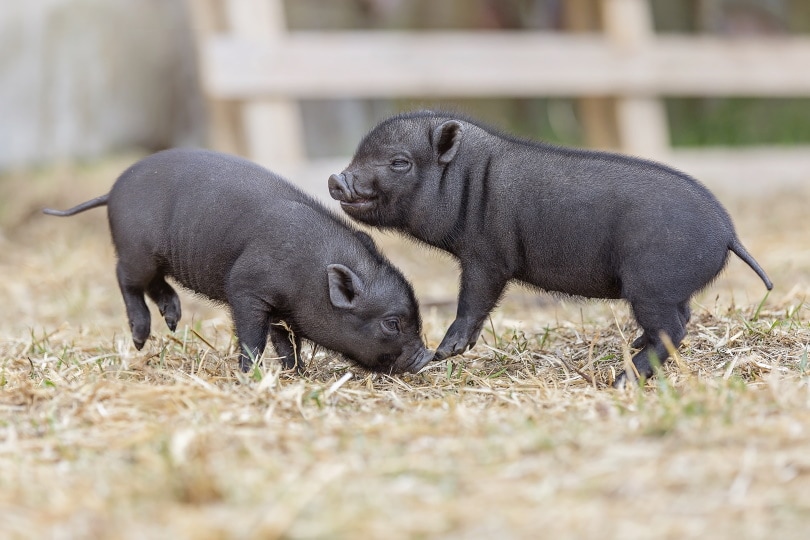
Final Thoughts
Individuals looking for an unusual pet may find mini pigs worth checking out if they have the room and time to devote to these animals. While they aren’t the best choice for everyone, a pig will make a lovable pet in the right home. Our list isn’t meant to be a deterrent. Instead, we want to help you make an informed decision by knowing what pet ownership involves. We hope that we’ve helped.
Featured Image Credit: Anna Vershynina, Shutterstock


